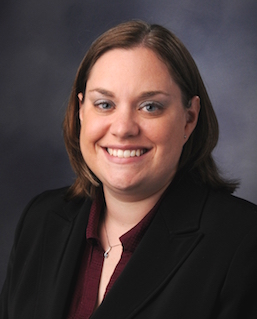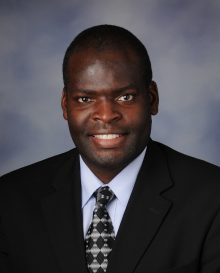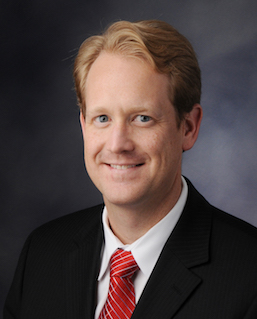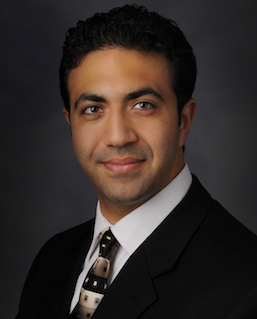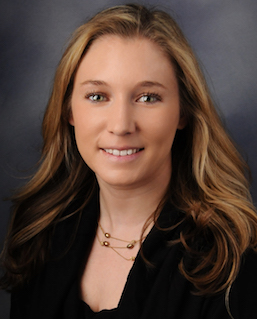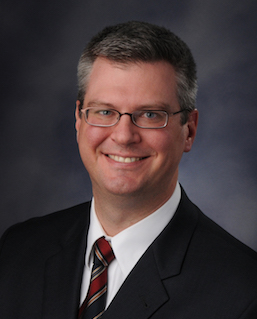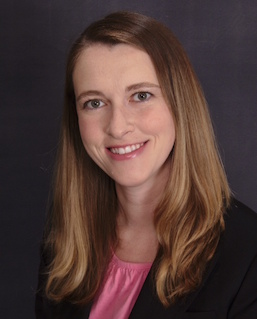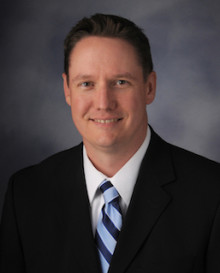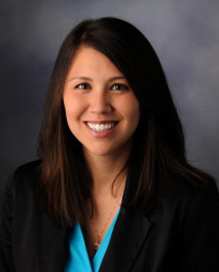About The Condition
Your esophagus is the tube that carries food from your mouth to your stomach.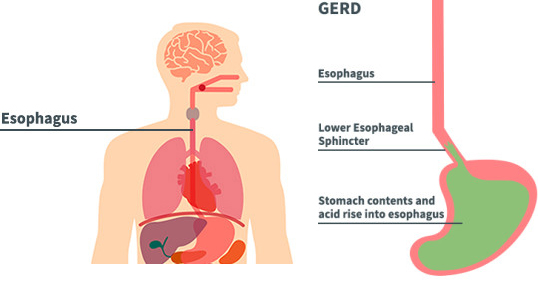
There are several types of esophageal disease:
- Achalasia – the degeneration of the nerves in your esophagus. This causes failure of the esophagus to move food and liquids into your stomach. It also causes the sphincter between your esophagus and stomach to tighten, as it fails to relax.
- Barrett’s esophagus – a condition in which the lining of the esophagus is replaced with tissue similar to the stomach lining. Barrett’s esophagus is often the result of long-standing gastroesophageal reflux disease (GERD) and can sometimes lead to esophageal cancer. It requires long-term surveillance with the possibility of surgery to reduce reflux.
- Esophageal cancer – can occur in any part of the esophagus and spread to your lymph nodes, windpipe, large blood vessels in the chest and nearby organs.
- Gastroesophageal Reflux Disease (GERD) – a chronic digestive disorder in which your stomach acid flows back into your esophagus, causing heartburn and irritation in the lining of the esophagus. Surgery can tighten the junction between your stomach and esophagus to lessen the backflow of acid.
- Hiatal hernia – a weakness in your diaphragm causing the abdominal contents to move upward into the chest cavity. Surgery aims to repair the defect in the diaphragm.
Watch a TV interview with Kourtney Kemp, MD, FACS, and Director of the Twin Cities Heartburn Center, on the topic of heartburn diagnosis and treatment options.
Diagnostic Testing

Esophagogastroduodenoscopy (EGD)
Purpose: An EGD provides a visual inspection of the esophagus, stomach and first part of the small bowel (duodenum). This procedure enables visualization of changes to your esophagus and stomach, such as ulcers, erosions and Barrett’s esophagus, as well as changes to the anatomy.
Description: The EGD is performed in the procedure center at any of our surgical locations. You will be sedated to make you relaxed and comfortable. The procedure is painless and takes approximately 15 to 30 minutes. You will go home the same day.
Risks: Having an EGD involves a small risk of complications including, but not limited to, sore throat, bleeding or perforation (puncture) of the upper gastrointestinal tract. Because of the intravenous sedation, there is a risk of problems with breathing, heart arrhythmias and pneumonia.
Preparation:
- NO eating or drinking after midnight the night before the procedure.
- You may take sips of water with your medication two hours before your procedure.
- If your test is in the afternoon, you may not eat or drink anything for eight hours before your procedure.
- You may need to stop blood thinners prior to the procedure. Ask your physician.
Afterwards: Because of the sedation, you will need a driver to take you home.
High Resolution Impedance Manometry (HRIM)
Purpose: High Resolution Impedance Manometry measures pressures and fluid movement in the esophagus. These measurements help us diagnose esophageal motility disorders and are crucial in planning esophageal surgery.
Description: The HRIM procedure is performed in the office. A small flexible catheter (tube) will be placed into your esophagus through your nose. You will be asked to swallow small amounts of salt water 10 to 12 times during the test. The test lasts about 15 to 20 minutes.
Risks: During the esophageal manometry procedure, there is a small potential for nose bleed. Some patients have difficulty with gagging, but with relaxation, most patients can complete the procedure.
Preparation: Your stomach needs to be empty, so you should have nothing to eat or drink for four hours prior to the study.
Afterwards: There will be no sedation, so you may drive yourself to and from the appointment.
24-Hour Esophageal Impedance pH test
Purpose: The 24-Hour Esophageal Impedance pH test evaluates the extent of gastric reflux into your esophagus over a prolonged period of time, typically 24 hours. Sensors on a catheter measure the level of acidity at various levels in your esophagus, as well as the reflux of stomach contents up into the esophagus. It is the most accurate test to document gastroesophageal reflux and is generally our preferred test because it measures acidity at different levels as well as non-acid reflux events.
Description: In the Esophageal Impedance pH test, a small catheter (tube) will be placed into your esophagus through your nose. This catheter is very thin (2mm in diameter) and is connected to a pocket-sized recording device that will hang over your shoulder. The catheter is inserted during an office visit. After you leave our office, you should go about as much normal activity as you can for the 24-hour duration of the test. The tube is connected to a small receiver, so you may not shower during the study. You will need to return to the office the following day (24 hours later) to have the tube removed.
Risks: Patients may experience some irritation and discomfort in the back of their throat during the procedure. More than 90 percent of patients are able to complete the procedure. Rarely, refractory stimulation of the gag reflex may prohibit completion.
Alternatives: In some patients who are unable to complete the test, or in whom more prolonged monitoring is thought to be more beneficial, the Bravo capsule pH test is an alternative.
Preparation:
- The most accurate results of this test are obtained if you have been off your reflux medication (such as Prilosec, Prevacid or Dexilant) for seven days.
- You may take Pepcid, Zantac or Tagamet up until two days before the test.
- You may take Tums, Mylanta or Gaviscon up until six hours before the procedure.
- During the test, please do not take any antacid medications until the tube comes out. Once the tube is out, you may return to your regular medications.
- The receiver is attached to the catheter and cannot get wet. This means you cannot shower until the tube is removed the following day. The catheter is visible and will be taped to your nose for the duration of the test.
BRAVO Capsule Esophageal pH Test
Purpose: The Bravo Capsule Esophageal pH Test measures and records the level of acidity (pH) in your esophagus to determine the degree to which you have acid reflux over a 48 to 96-hour period. The Bravo device consists of a capsule about the size of a vitamin pill that attaches to your esophagus, and transmits information wirelessly to a pocket-sized receiver that you carry with you.
Description: The capsule will be put in place with a catheter. The capsule attaches itself to the inside of your esophagus using suction and the introducing catheter is then removed. The Bravo may be placed during an endoscopy procedure while you are under sedation. The receiver is returned to our office after completion of the test. The capsule will dislodge itself in about 3 to 7 days and pass out with the stool.
Risks: Uncommonly, patients will experience chest pain or discomfort due to the presence of the Bravo capsule in the esophagus. Rarely, the capsule will not fall off spontaneously, or food may hang up on the Bravo capsule, and endoscopy may be required to remove the capsule. The manufacturer advises that an MRI not be obtained if the Bravo capsule could still be in the body. If it has been longer than a month, is is ok to proceed with an MRI. If you need an MRI before one month, it is recommended you have an X-ray to evaluate if the Bravo capsule remains. The Bravo capsule will sometimes dislodge prematurely, or not function properly, and need to be reinserted.
Alternatives: 24-hour Esophageal Impedance or Esophageal Manometry is an alternative catheter-based system that provides greater accuracy in general.
Preparation:
- The most accurate results of this test are obtained if you have been off of your reflux medication (such as Prilosec, Prevacid or Dexilant) for seven days.
- You may take Pepcid, Zantac or Tagamet up until two days before the test.
- You may take Tums, Mylanta or Gaviscon up until six hours before the procedure.
Afterwards: If you have been sedated, you will need someone to drive you home.
Esophagram
Purpose: This test provides X-ray imaging of your esophagus and upper stomach, including the anatomy and motility of the esophagus. It is useful in evaluating swallowing problems, as well as reflux, and is frequently obtained to evaluate esophageal and gastric problems.
Description: An esophagram is performed in the X-ray (radiology) department. You will be given a chalky-tasting thick liquid (barium) to drink, and X-rays will be obtained as you swallow.
Risks: A barium swallow is generally a safe test. Allergic reactions to barium are very uncommon, but may occur. Constipation may result from the barium, and sometimes a mild laxative is helpful. Rarely barium may be aspirated into the lungs during the test.
Preparation: There is no preparation needed for an esophagram.
Afterwards: There is no sedation, so you can drive yourself home.
Before Surgery
 Prior to surgery, you may be asked to change your diet and swallow train. Swallow training involves taking bites or swallows with 20 to 30 seconds in between each swallow. It is beneficial to do this with a timer during meals.
Prior to surgery, you may be asked to change your diet and swallow train. Swallow training involves taking bites or swallows with 20 to 30 seconds in between each swallow. It is beneficial to do this with a timer during meals.- Always ask your surgeon about your diet before surgery. For certain conditions, like achalasia, you may be asked to follow a liquid diet before surgery for several days.
- Stop smoking for one month prior to your surgery. Nicotine decreases blood flow, prevents healing after surgery and increases your risk of infection.
- Increase your activity. Aim for 30 minutes of walking or other aerobic activity daily to build strength.
- Improve your nutrition. Add protein supplements such as Boost or Ensure to help your body heal after surgery.
Surgery
Our surgeons perform open surgery, as well as minimally invasive surgeries, for esophageal disease. Your surgeon will explain your particular procedure in more detail.
Minimally invasive surgery. Minimally invasive surgery is performed with laparoscopy or robot-assisted surgery using the da Vinci Surgical System.
- Laparoscopic surgery. Laparoscopic surgery requires only a few small incisions into which your surgeon will fit long, thin surgical instruments and a tiny camera. The camera will provide images to guide the surgeon during the procedure.
- Robotic surgery. Some laparoscopic surgeries may be performed using the da Vinci Surgical System. This robotic option gives your surgeon a magnified 3D high-definition view inside your body. The system also enables the surgeon’s hand movements to be translated into precise movements of small instruments inside your body.
Open surgery. Minimally With open surgery, your physician will make an incision at the site of the abnormality large enough so he or she can see and touch your internal organs while operating.
After Surgery
- After any esophageal surgery, swallowing/eating takes practice. We recommend eating slowly, taking 20 to 30 seconds between swallows. If not, you may experience increased abdominal or chest pressure after eating.
- Ask your surgeon about diet changes. Due to esophageal swelling, it may be difficult to swallow for the first few weeks. Many patients are encouraged to adhere to a liquid diet for one to three weeks following surgery, with gradual advancement to a regular diet.
- You will be encouraged to walk to prevent blood clots, muscle weakness and constipation.
- You may experience constipation. If so, you may take a laxative such as Miralax or Milk of Magnesia.
- Ice may help to reduce the swelling for the first 48 to 96 hours. Then use heat to ease muscle soreness and relax tight muscles.
- Ask your surgeon before taking ibuprofen. A small amount of bleeding or drainage is expected from the wound during the first one or two days.
- You may shower one or two days after surgery, but avoid baths, hot tubs, soaking or swimming for two weeks.
- Always talk to your surgeon about weight restrictions and return-to-work options.
- Most patients who have had laparoscopic or robotic surgery are discharged the day following surgery.
- You will be asked to see your surgeon in one to three weeks after surgery.
- If you notice a fever greater than 101 degrees Fahrenheit or drainage from your wound, let your surgeon know by calling 763.780.6699.
If you have additional questions, please contact us at 763.780.6699.
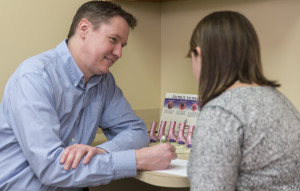 Prior to surgery, you may be asked to change your diet and swallow train. Swallow training involves taking bites or swallows with 20 to 30 seconds in between each swallow. It is beneficial to do this with a timer during meals.
Prior to surgery, you may be asked to change your diet and swallow train. Swallow training involves taking bites or swallows with 20 to 30 seconds in between each swallow. It is beneficial to do this with a timer during meals.